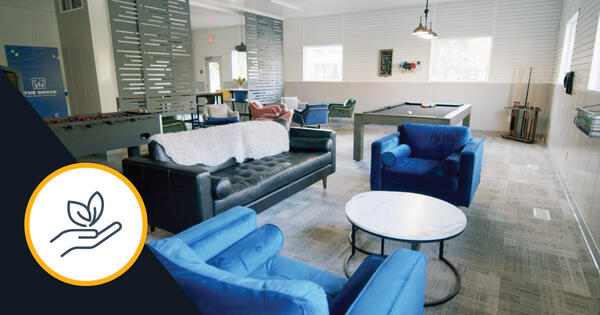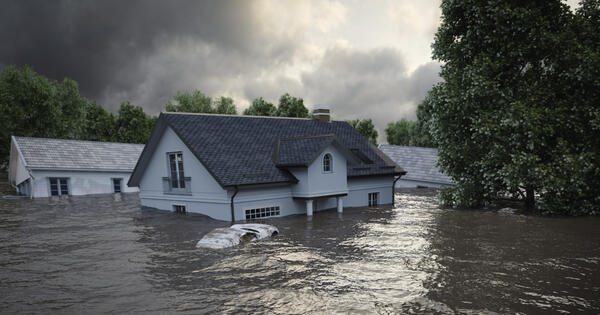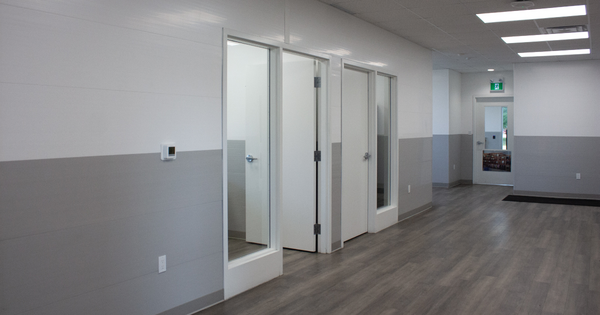FRP, commonly known as fiber reinforced plastic, has been widely favored for wall coverings in commercial, industrial, and agricultural settings due to its durability and resistance to water and chemicals. However, it's likely an expensive and excessively engineered solution for your commercial or agricultural needs.
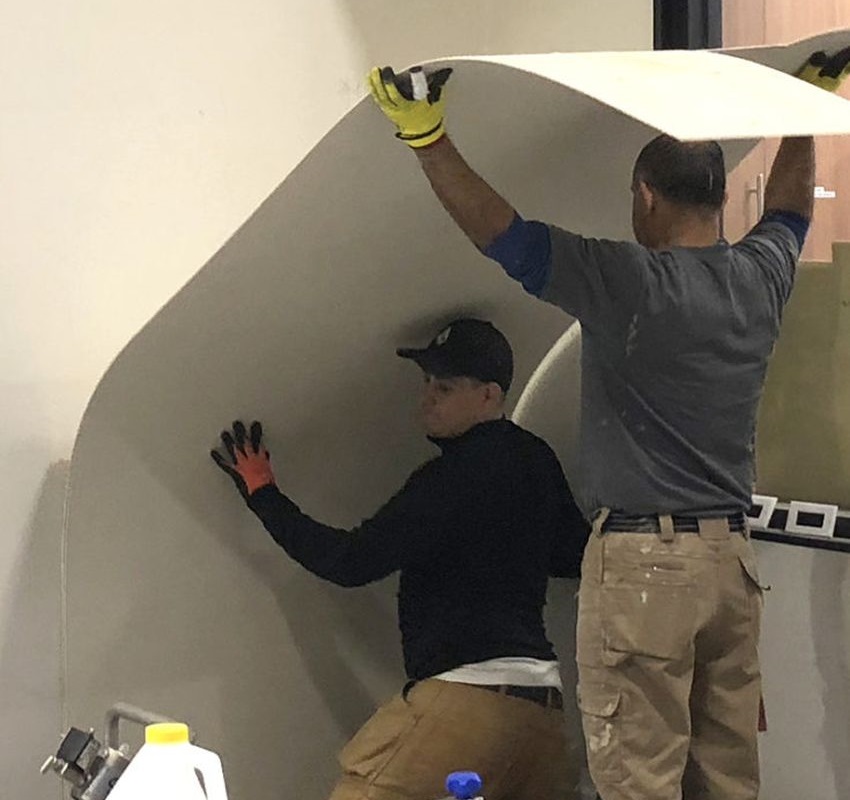
The Downsides of FRP for Commercial Projects
FRP panels are commonly found in food processing facilities, commercial kitchens, healthcare facilities, retail spaces, laboratories, transportation vehicles, and agricultural settings. Despite their benefits, there are some downsides to consider:
- Installation Complexity: Installing FRP panels requires specific tools and expertise, especially for precise cutting and fitting around fixtures. Improper installation can lead to issues such as gaps or leaks, necessitating professional installation or careful DIY work.
- Vulnerability to Impact Damage: Although FRP panels are durable, they can still be susceptible to damage from heavy impacts or sharp objects. In high-traffic areas or environments with frequent equipment movement, additional protection measures may be needed to prevent dents or punctures.
- Vulnerability to Moisture: FRP is said to be moisture and water resistant, but the panel seams are penetrable. Over time, moisture can cause the plastic to separate from its substrate, creating a space for mold and mildew to grow undetected and jeopardizing the safety of hygienic spaces.
- Limited Design Options: While FRP panels offer versatility in terms of finish and color, they may not provide the same level of design flexibility as other materials like tiles or decorative wall panels. This limitation can impact the overall aesthetic appeal, especially in design-focused spaces.
- Environmental Considerations: Fiberglass production involves the use of energy and resources, and some FRP panels may contain chemicals or additives that raise environmental concerns. Plus, FRP isn’t easy to recycle thanks to the backing material and glue used during installation, and it may need to be replaced as often as every five years in applications like commercial kitchens.
Durable Alternatives to FRP for Commercial Construction
Architects and contractors should explore alternative materials to enhance design flexibility, cost efficiency, address environmental concerns, and meet project requirements. Considering options like PVC panels, stainless steel panels, ceramic tiles, and high-pressure laminate allows for greater versatility and creativity in building design and construction.
1. PVC Panels
Polyvinyl chloride or PVC panels like Trusscore Wall&CeilingBoard serve as a popular alternative to FRP for wall and ceiling applications in commercial construction. Crafted from a durable thermoplastic polymer, PVC panels present several benefits:
- Water Resistance: FRP is said to be moisture and water resistant, but the panel seams are penetrable. Over time, moisture can cause the plastic to separate from its substrate, creating a space for mold and mildew to grow. Trusscore Wall&CeilingBoard panels are 100% water and moisture resistant, and the presence of PVC means the panels will shed water in wet or damp applications.
- Cleanability: Trusscore Wall&CeilingBoard panels have a smooth, non-porous surface that can be repeatedly cleaned, pressure washed, disinfected, and sanitized without ever showing signs of damage or wear and tear. Plus, Trusscore Wall&CeilingBoard panels are antimicrobial and provide complete protection against the growth of mold, bacteria, and viruses per third party testing (ISO 846:2019).
- Durability: For most commercial projects, FRP is over engineered, and PVC panels will meet and exceed your project’s strength and durability needs. The mechanical strength of PVC combined with the unique truss design of Trusscore Wall&CeilingBoard means that the panels can outlive the buildings they’re installed in. The abrasion resistance of PVC also means that the panels are impact-resistant and can stand up to contact in high traffic areas without showing dents, cracks, or damage.
- Cost-Effectiveness: FRP often takes multiple skilled laborers hours or days to install. Since Trusscore requires no special tools or skills to install, the pre-finished panels can be installed twice as fast with only one person needed for the job. Factor in material and labor, and Trusscore Wall&CeilingBoard offers a 33% lower installed cost compared to FRP. nbsp;
- Ease of Install: FRP is difficult to handle, difficult to cut, and requires a multi-step installation process — including the use of messy backer glue that’s filled with volatile organic compounds (VOCs) to jeopardize air quality — that calls for multiple skilled installers. Trusscore Wall&CeilingBoard are low VOC compliant and doesn’t require backers or glue to install. The pre-finished panels come ready to install, with just a few screws and common tools required.




Trusscore Wall&CeilingBoard is a Better Alternative to FRP Panels
While Trusscore Wall&CeilingBoard offers similar benefits to FRP in terms of durability, cleanability, light reflectivity, and regulatory compliance, our PVC panels outperform FRP panels in ease of installation, installed cost, moisture and water resistance, indoor environmental quality, sustainability, and fire performance.
2. Stainless Steel Panels
Stainless steel panels, crafted from an alloy of steel, chromium, and other metals, stand renowned for their exceptional strength, corrosion resistance, and longevity. These panels, available in various finishes such as brushed, polished, or patterned, offer a sleek and modern aesthetic:
- Durability: Stainless steel panels exhibit incredible durability, capable of withstanding heavy impacts, scratches, and wear, ensuring enduring performance in high-traffic areas. Compared to FRP, stainless steel panels offer similar durability but with a sleeker and more modern aesthetic.
- Hygienic: Inherently resistant to bacterial growth, stainless steel emerges as an ideal choice for environments prioritizing cleanliness and hygiene, such as healthcare facilities, laboratories, and food processing plants. This stands as a notable advantage over FRP, offering superior hygiene properties without the need for special treatments or coatings.
- Corrosion Resistance: Unlike FRP, which may degrade over time in harsh environments, stainless steel panels demonstrate high resistance to corrosion, moisture, and chemical exposure, thereby ensuring minimal maintenance and long-term durability. This feature sets stainless steel apart from FRP, particularly in environments where exposure to corrosive substances is a concern.
- Aesthetic Appeal: Stainless steel panels lend a sophisticated and contemporary look to commercial spaces, enhancing the overall aesthetic appeal and creating a modern ambiance. While FRP panels offer durability, stainless steel panels offer a distinct visual appeal that can elevate the design of commercial spaces.
- Cost-Effectiveness: While stainless steel panels may have a higher upfront cost compared to FRP, their longevity and minimal maintenance requirements can result in long-term cost savings. This consideration makes stainless steel panels a worthwhile investment for commercial projects aiming for durability and aesthetic appeal.
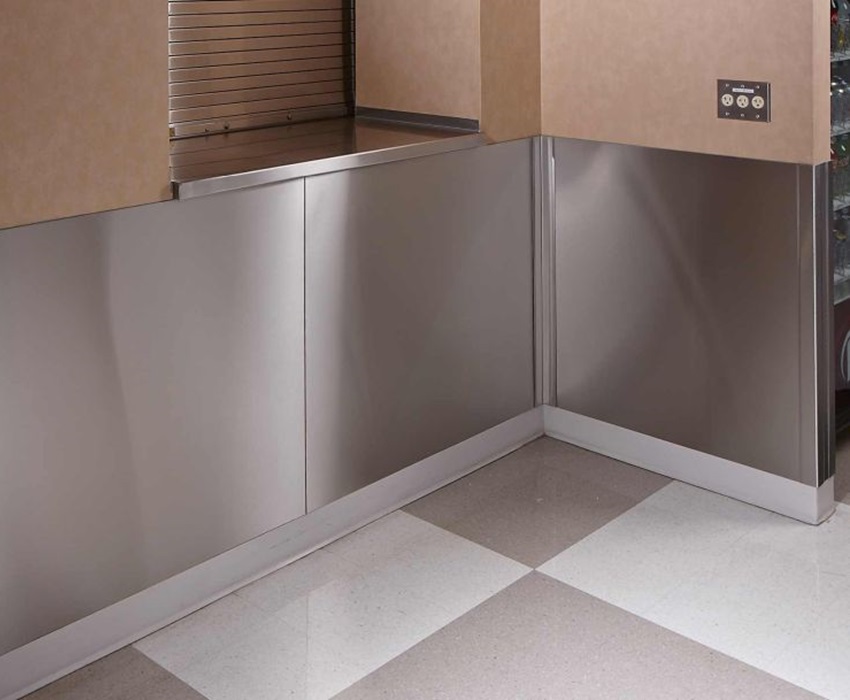
3. Ceramic Tiles
Ceramic tiles, manufactured from clay, minerals, and water, are molded into shape and then fired at high temperatures. They come in a variety of sizes, shapes, colors, and finishes, offering endless design possibilities for commercial spaces:
- Durability: Ceramic tiles boast high durability and resistance to wear, scratches, and stains, rendering them suitable for high-traffic areas in commercial settings. Compared to FRP, ceramic tiles offer similar durability but with a different aesthetic appeal and texture.
- Water Resistance: Unlike FRP, which may be prone to water damage over time, ceramic tiles are inherently waterproof, making them ideal for wet environments such as bathrooms, kitchens, and swimming pool areas. This stands as a notable advantage over FRP, which may require additional sealing or maintenance to prevent water damage.
- Aesthetic Variety: With a wide range of designs, patterns, and textures, ceramic tiles enable creativity and customization to match the aesthetic vision of any commercial space. In comparison to FRP, ceramic tiles provide a broader range of design options, offering more flexibility in achieving desired aesthetics.
- Easy Maintenance: Ceramic tiles facilitate easy cleaning and maintenance, requiring only regular sweeping and occasional mopping to keep them looking pristine. While both ceramic tiles and FRP offer ease of maintenance, ceramic tiles may require less frequent cleaning due to their smooth surface, reducing maintenance efforts over time.
- Installation Complexity: Installing ceramic tiles requires specialized tools and expertise compared to FRP. Proper installation involves precise measurements, cutting, and grouting, which may increase labor costs and time. However, professional installation ensures a long-lasting and visually appealing result.
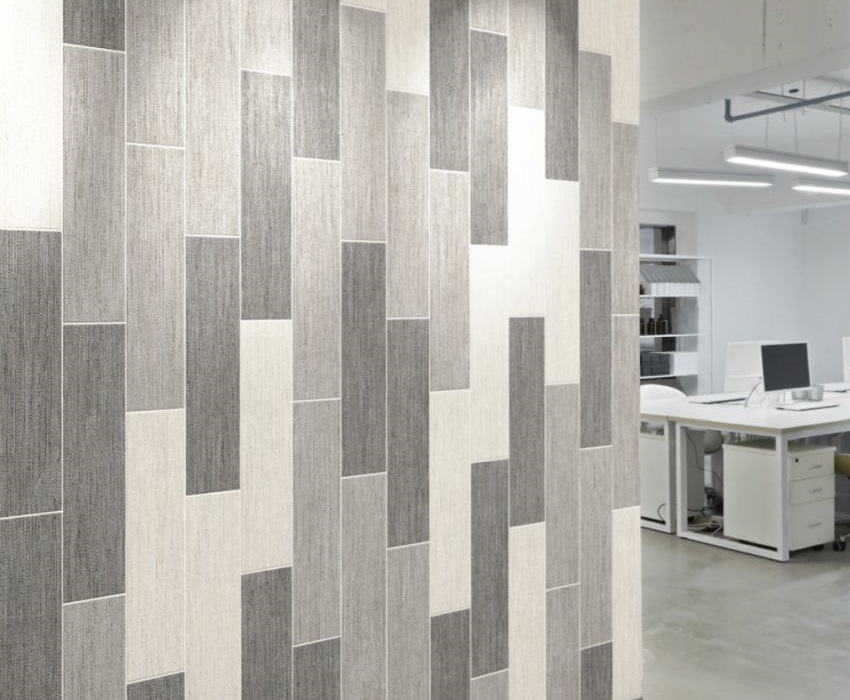
4. High-Pressure Laminate
High-pressure laminate (HPL), composed of multiple layers of kraft paper impregnated with phenolic resin, topped with a decorative layer and a clear overlay, offers a durable and versatile material:
- Durability: HPL stands highly durable and resistant to scratches, abrasion, and impact, making it suitable for high-traffic areas in commercial settings. Compared to FRP, HPL offers similar durability but with a different aesthetic appeal and texture.
- Aesthetic Variety: With a wide range of colors, patterns, and textures, including wood grains, stone textures, and abstract designs, HPL offers extensive design flexibility to architects and designers. In comparison to FRP, HPL provides a broader range of design options, allowing for greater customization to match specific aesthetic preferences.
- Easy Maintenance: HPL surfaces are easy to clean and maintain, requiring only regular wiping with a damp cloth or mild detergent to retain their pristine appearance. Both HPL and FRP offer ease of maintenance, but HPL may require less frequent cleaning due to its smooth surface and protective overlay.
- Water Resistance: Though not inherently waterproof like FRP, HPL can be manufactured with a waterproof substrate or treated with waterproof sealants to enhance its moisture resistance for use in wet environments. This feature addresses concerns about water damage and ensures suitability for applications where moisture resistance is essential.
- Cost-Effectiveness: While HPL may have a higher upfront cost compared to FRP, its durability, aesthetic versatility, and long-term performance can provide value for commercial projects over time. Considering the longevity and design flexibility offered by HPL may justify the initial investment for certain applications.
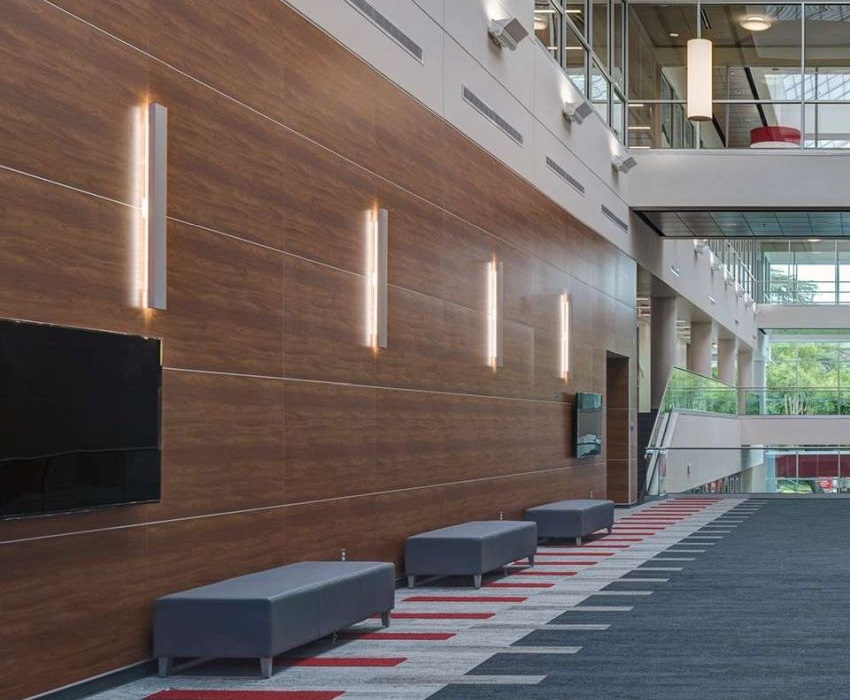
Choosing alternatives to FRP in commercial construction offers a pathway to enhanced functionality, aesthetics, and sustainability. By exploring materials such as PVC wall panels, stainless steel, ceramic tiles, and high-pressure laminate, architects and contractors can elevate their projects with wall and ceiling systems that are tailored to their unique requirements.

